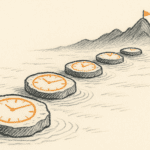Innovation is all about connections

The year was 1970. A man was with his family at a busy airport, lugging two very heavy suitcases. An airport employee walked past, pushing a heavy piece of machinery fairly easily on a large wheeled trolley.
An “aha” moment occured. The man, Bernard D. Sadow, looked at the trolley, looked at his suitcases, and thought: “Wheels on suitcases.” Sadow was a luggage company executive, and that moment took him to the presidency of his company.
The wheel was not a new thing in 1970, as some of you may recall. It had been around since 3500 BC. But a wheel on luggage? No one had thought of it.
This story is recounted entertainingly in the book “Innovation As Usual,” by Paddy Miller and Thomas Wedell-Wedellsborg. The point is simple: innovation occurs best when connections are made. Not when a clever person thinks in isolation, or when organizations cocoon themselves from the outside world.
The authors say it best: “Due to a large body of research, we now have a pretty clear answer to the question of where new ideas come from: they come when people are systematically exposed to new, external input. No matter how bright people are, if they sit and move in the same worlds every day, getting the same kind of input as everybody else, chances are they won’t get original ideas. On the other hand, when people regularly expose themselves to new ideas and places – when they meet new people, spend time with their customers, stay in other countries, are exposed to new industries, experience different cultures, read new books, study new fields, or even just leave the office – they dramatically increase their chances of getting better ideas.”
Applause is called for. I’m happy to say I know Paddy Miller: I met him years ago when I was adjunct faculty at Strathmore Business School and he was a visiting professor. I won’t forget an innovation he taught me: that you can have an entire slide deck without once using a set of bullet points. Given my own background in professional services organizations, that insight was unlikely to come to me all by itself. I had to see someone do it, and do it well. I’ve never looked back. Thank you, Paddy.
Another innovation expert, Frans Johansson, emphasises the need for intersections: places where people from different disciplines and backgrounds connect. Innovation is most often not a single creative breakthrough; it is a jigsaw puzzle that needs all the pieces to come together.
Look at our own signature innovation around these parts: M-Pesa. Was that a single clever person’s work, or even a single organization’s insight? Not at all. Many people and many groups were involved. Today M-Pesa is a huge force in our economy; but the real creativity was in bringing talented people together over time: people who understood phones; people who understood payments; people who understood back-end communications technology; people who understood banking; people who understood the daily problems of Kenyans. No one person would have pulled all of that off.
So ask yourself these questions: are you shutting your employees off from the world with some misplaced sense of secrecy, or encouraging them to look and connect outward with curiosity? Are you repeating the same routine every single day, experiencing the same year over and over? Are you extolling the virtues and safety of tribe and community? Do you take joy in other people’s cultures, or recoil from them in fear and discomfort? Are your children’s friends from varied backgrounds, or are they all clones of one another?
The innovation test is not one any person of ambition or purpose can fail in this current era. Most do, however, not because they are not creative; but because they are not open to thoughts and insights from outside.
If that’s you, fling open some windows, change some routines, travel the world. You may surprise yourself.

Buy Sunny Bindra's new book
The X in CX
here »
Popular Posts
- You are who you hang out withSeptember 28, 2025
- Why your mother was right about your anxietyOctober 12, 2025
- Born knowing the waySeptember 21, 2025
- The balance sheet that mattersOctober 5, 2025
- The art of the CX rescueSeptember 14, 2025















